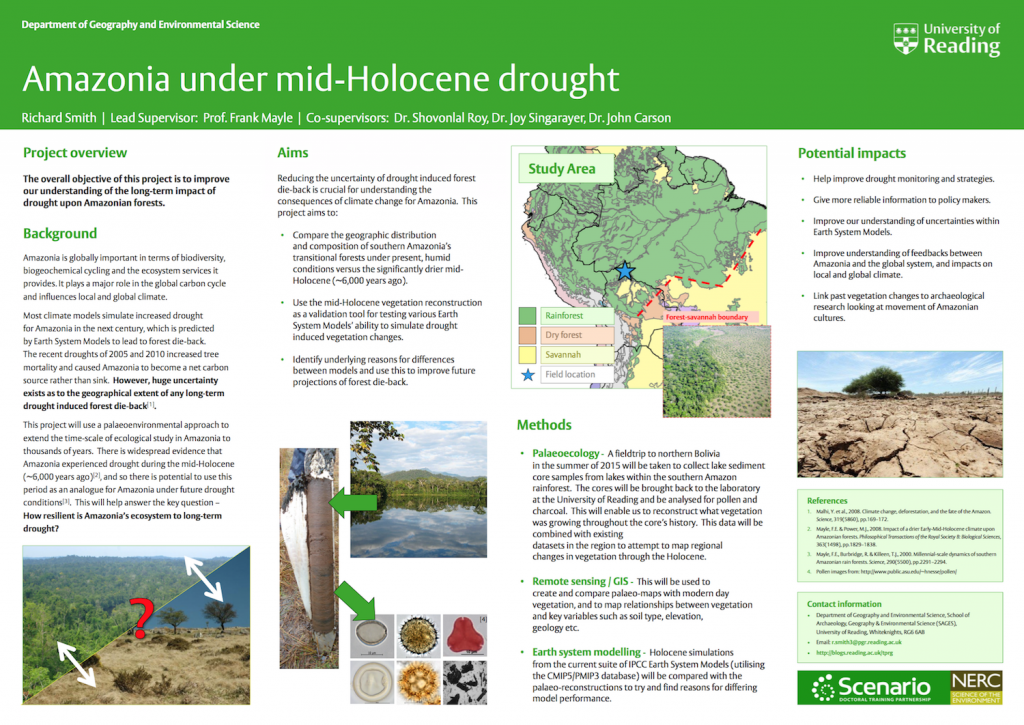By Richard Smith
Hello, and happy new year! In this blog post I’d like to briefly tell you about my first paper that was accepted and published in the journal Quaternary Research in late 2017. It’s entitled “Impact of mid- to late Holocene precipitation changes on vegetation across lowland tropical South America: a paleo-data synthesis” and can be found here.
In late 2016, Frank was approached by Mark Bush who wanted to prepare a collection of papers for a ‘special issue’ to honour the lives of two prominent palaeoecologists, Prof. Paul Colinvaux (1930-2016) and Prof. Daniel Livingstone (1927-2016). Both Paul and Daniel were leading figures in tropical palaeoecology, with Paul focusing predominantly on tropical South America and Daniel in tropical Africa. Throughout their careers, they were at the forefront of much of the breakthroughs in tropical palaeoecology, as well as inspiring and training many graduate students to create an international legacy of palaeoecologists. More can be read about their amazing careers in Mark Bush and Will Gosling’s tribute article: “In search of the ice age tropics, a tribute to Prof. Daniel Livingstone and Prof. Paul Colinvaux”.

(a) Dan Livingstone (photo courtesy of Duke University). (b) Paul Colinvaux at El Junco Crater Lake, Galapagos Islands (photo courtesy of Miriam Steinitz-Kannan). [From Bush & Gosling, 2018]
Given the focus as Paul and Daniel’s careers, the special issue was to focus on South American and Africa palaeoecology. Frank suggested that I take this opportunity to write a paper to submit to this special issue on some work I had completed previously, synthesising existing palaeoecological data from across tropical South America from the mid-Holocene to the present. So that is what I did! Continue reading




